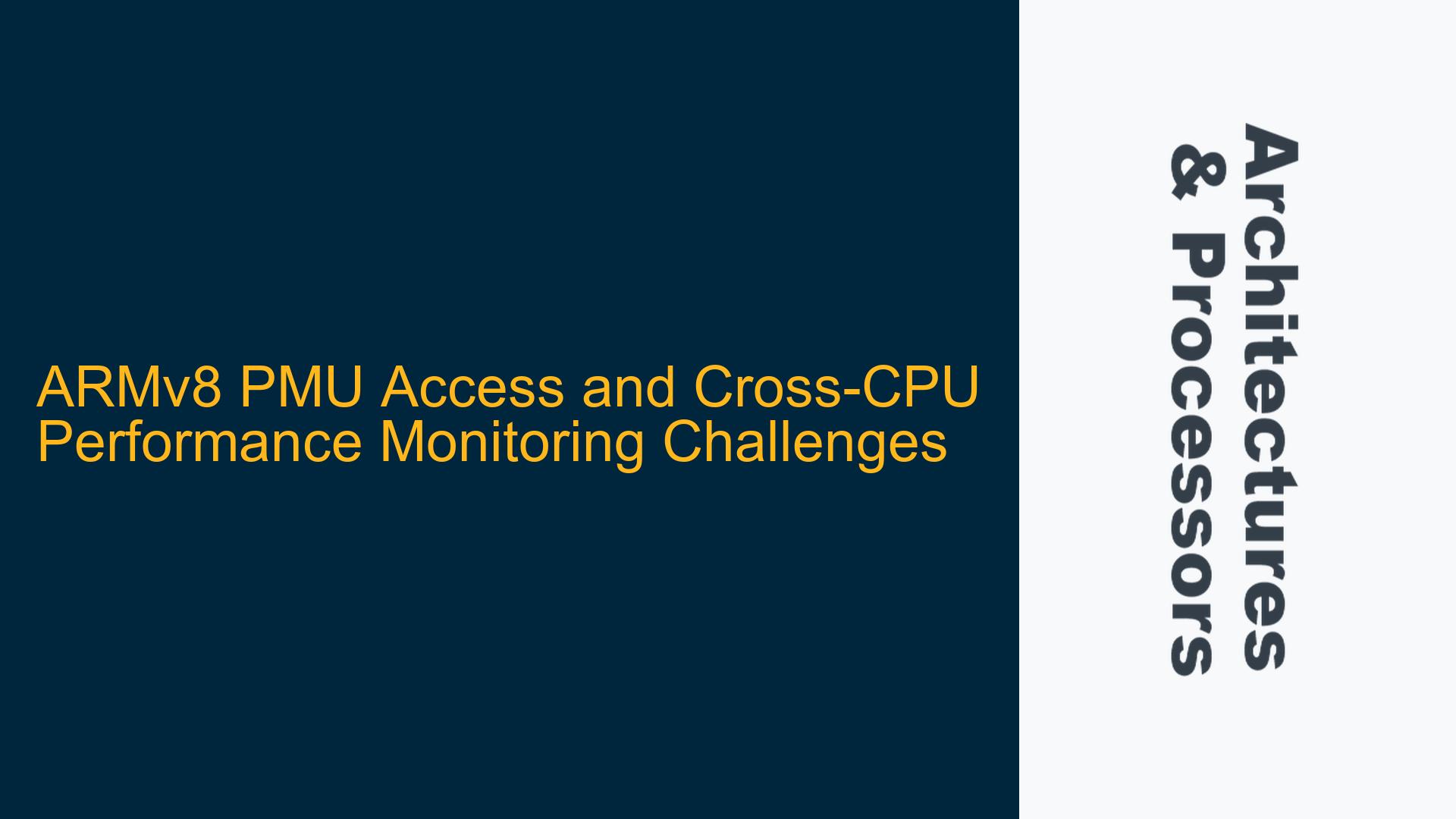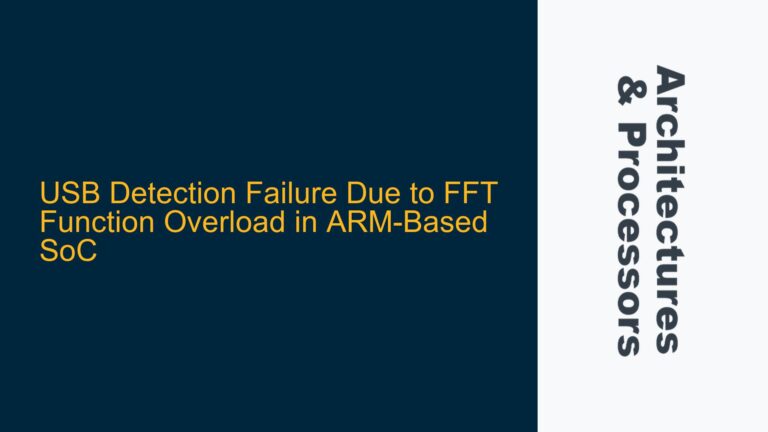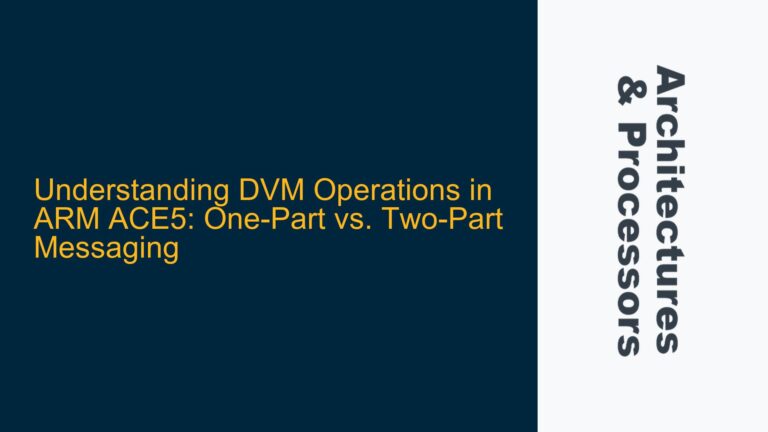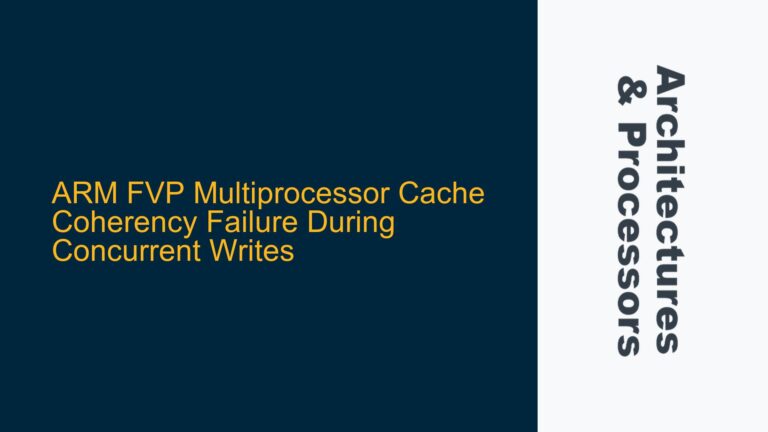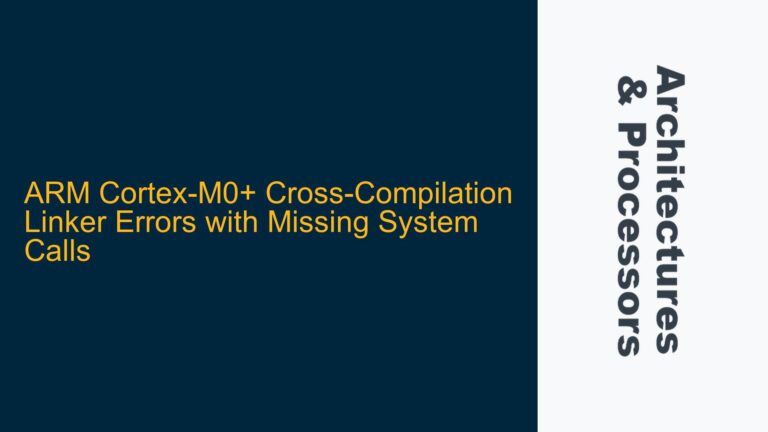ARMv8 PMU Architecture and Multicore Access Limitations
The ARMv8 architecture incorporates Performance Monitoring Units (PMUs) as part of its profiling and debugging infrastructure. Each CPU core in a multicore ARMv8 system is equipped with its own dedicated PMU, which is responsible for counting and recording hardware events such as cache misses, branch mispredictions, and instruction executions. These PMUs are critical for performance analysis, optimization, and debugging, as they provide low-level insights into the behavior of the CPU cores.
In a multicore ARMv8 system, the PMUs are typically accessed via memory-mapped registers or coprocessor interfaces. Each PMU is tightly coupled to its respective CPU core, meaning that the PMU registers are only directly accessible from the core to which they belong. This design ensures that the PMU can accurately monitor the performance of its associated core without interference from other cores. However, this tight coupling also introduces challenges when attempting to access one CPU core’s PMU from another CPU core.
The memory-mapped interface for PMU registers is usually located in the core’s private memory region, which is not directly accessible from other cores. Attempting to access another core’s PMU registers from a different core will typically result in a bus error or an undefined behavior, as the memory-mapped interface is not designed to support cross-core access. This limitation is intentional, as it prevents potential race conditions and ensures that each PMU operates independently and accurately for its respective core.
Cross-Core PMU Access Challenges and Memory-Mapped Interface Constraints
The primary challenge in accessing another CPU core’s PMU from a different core lies in the memory-mapped interface constraints and the architectural design of the ARMv8 PMU. Each PMU is integrated into the CPU core’s private address space, which is not exposed to other cores. This design ensures that the PMU can operate without contention or interference from other cores, but it also means that direct cross-core access is not possible.
One possible cause of confusion is the assumption that the memory-mapped interface for PMU registers is part of a shared memory region accessible to all cores. However, this is not the case. The PMU registers are typically located in a core-specific memory region, which is only accessible from the core to which the PMU belongs. Attempting to access these registers from another core will result in a bus error or an undefined behavior, as the memory controller will not route the access to the correct core.
Another potential cause of issues is the lack of synchronization mechanisms for cross-core PMU access. Even if it were possible to access another core’s PMU registers, there would be no guarantee that the data read from the registers would be consistent or accurate. The PMU registers are updated continuously as the core executes instructions, and without proper synchronization, the data read from the registers could be stale or inconsistent.
Furthermore, the ARMv8 architecture does not provide a standardized mechanism for cross-core PMU access. While some implementations may include custom hardware mechanisms or software protocols for accessing another core’s PMU, these mechanisms are not part of the ARMv8 specification and are not guaranteed to be available on all systems. This lack of standardization makes it difficult to develop portable software for cross-core PMU access.
Implementing Cross-Core PMU Access with Inter-Processor Communication and Software Protocols
To enable cross-core PMU access in an ARMv8 multicore system, it is necessary to implement inter-processor communication (IPC) mechanisms and software protocols that allow one core to request performance data from another core’s PMU. This approach involves using shared memory regions, message passing, or other IPC mechanisms to coordinate access to the PMU registers.
One possible solution is to use a shared memory region to store performance data collected by each core’s PMU. Each core can periodically write its PMU data to the shared memory region, allowing other cores to read the data as needed. This approach requires careful synchronization to ensure that the data in the shared memory region is consistent and up-to-date. Techniques such as memory barriers, spinlocks, or atomic operations can be used to synchronize access to the shared memory region.
Another approach is to implement a message-passing protocol that allows one core to request performance data from another core’s PMU. The requesting core sends a message to the target core, which then reads its PMU registers and sends the data back to the requesting core. This approach requires the implementation of a message-passing infrastructure, such as a mailbox system or a custom interrupt-based protocol. The message-passing protocol must be carefully designed to ensure that the data is transmitted accurately and efficiently.
In addition to IPC mechanisms, it may be necessary to implement software-based cache management techniques to ensure that the PMU data is consistent across cores. The ARMv8 architecture includes instructions for cache maintenance, such as data synchronization barriers (DSBs) and cache invalidation operations, which can be used to ensure that the PMU data is flushed from the cache and written to memory before it is accessed by another core.
Finally, it is important to consider the performance overhead of cross-core PMU access. Accessing another core’s PMU registers via IPC mechanisms can introduce significant latency and overhead, which may affect the overall performance of the system. To minimize this overhead, it is important to optimize the IPC mechanisms and software protocols used for cross-core PMU access. Techniques such as batching PMU data requests, reducing the frequency of data collection, and using efficient synchronization mechanisms can help to reduce the performance impact of cross-core PMU access.
In conclusion, while the ARMv8 architecture does not provide direct support for cross-core PMU access, it is possible to implement cross-core PMU access using inter-processor communication mechanisms and software protocols. These solutions require careful design and optimization to ensure that the PMU data is accurate, consistent, and efficiently transmitted between cores. By leveraging shared memory regions, message-passing protocols, and cache management techniques, it is possible to overcome the limitations of the ARMv8 PMU architecture and enable cross-core performance monitoring in multicore systems.
